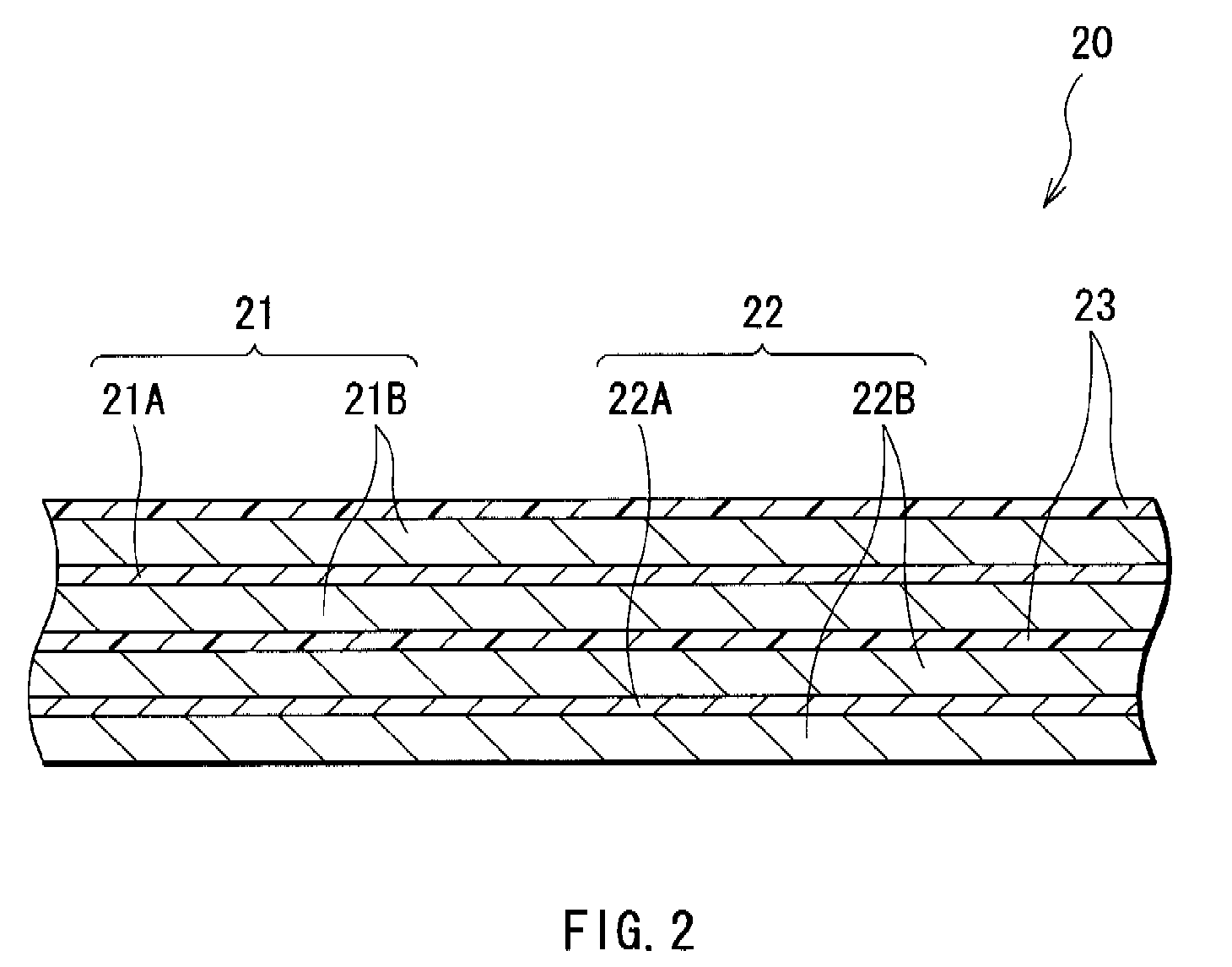Electrolytic solution and battery
a technology applied in the field of electrolysis solution and battery, can solve the problems of high-temperature atmosphere exposure of secondary batteries in use, and achieve the effects of enhancing the performance of electronic parts, increasing the heat transfer value of electronic devices, and reducing the characteristics of secondary batteries
- Summary
- Abstract
- Description
- Claims
- Application Information
AI Technical Summary
Benefits of technology
Problems solved by technology
Method used
Image
Examples
example 1-1
[0152]A cylindrical secondary battery shown in FIGS. 1 and 2 was formed through the use of artificial graphite as an anode active material. At that time, the secondary battery was a lithium-ion secondary battery in which the capacity of the anode 22 was represented by a capacity component based on insertion and extraction of lithium.
[0153]At first, the cathode 21 was formed. In this case, after lithium carbonate (Li2CO3) and cobalt carbonate (CoCO3) were mixed at a molar ratio of 0.5:1, the mixture was fired in air at 900° C. for 5 hours to obtain a lithium-cobalt complex oxide. Next, after 91 parts by weight of the lithium-cobalt complex oxide as a cathode active material, 6 parts by weight of graphite as an electrical conductor and 3 parts by weight of polyvinylidene fluoride as a binder were mixed to form a cathode mixture, the cathode mixture was dispersed in N-methyl-2-pyrrolidone to form paste-form cathode mixture slurry. Then, after the cathode mixture slurry was uniformly ap...
examples 1-2 to 1-4
[0157]Secondary batteries were formed by the same steps as those in Example 1-1, except that instead of FEC, as the main solvent, trans-4,5-difluoro-1,3-dioxolane-2-one (t-DFEC: Example 1-2) or cis-4,5-difluoro-1,3-dioxolane-2-one (c-DFEC: Example 1-3) as the cyclic carbonate represented by Chemical Formula 11 which included a halogen, or bis(fluoromethyl) carbonate (DFDMC: Example 1-4) as the chain carbonate represented by Chemical Formula 12 which included a halogen was used.
examples 1-5 , 1-6
Examples 1-5, 1-6
[0158]Secondary batteries were formed by the same steps as those in Example 1-1, except that instead of the compound represented by Chemical Formula 23 as the sub solvent, the compound represented by Chemical Formula 24 as the compound represented by Chemical Formula 14 (Example 1-6) or the compound represented by Chemical Formula 25 as the compound represented by Chemical Formula 15 (Example 1-6) was used.
PUM
| Property | Measurement | Unit |
|---|---|---|
| intrinsic viscosity | aaaaa | aaaaa |
| ionic conductivity | aaaaa | aaaaa |
| thickness | aaaaa | aaaaa |
Abstract
Description
Claims
Application Information
 Login to View More
Login to View More - R&D
- Intellectual Property
- Life Sciences
- Materials
- Tech Scout
- Unparalleled Data Quality
- Higher Quality Content
- 60% Fewer Hallucinations
Browse by: Latest US Patents, China's latest patents, Technical Efficacy Thesaurus, Application Domain, Technology Topic, Popular Technical Reports.
© 2025 PatSnap. All rights reserved.Legal|Privacy policy|Modern Slavery Act Transparency Statement|Sitemap|About US| Contact US: help@patsnap.com



